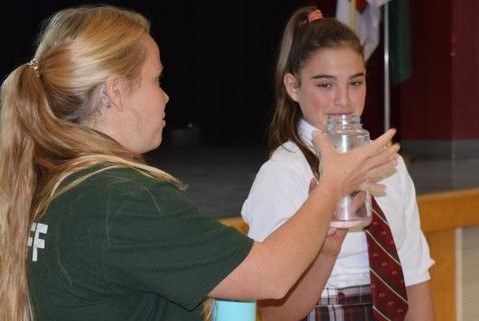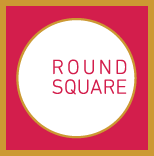Water Conservation at Bayview Glen
Posted: 10 October 2019

IDEALS
- Environmentalism
- Leadership
- Service
Discoveries
- Communication skills
- Problem solving
- Sense of responsibility
- Commitment to sustainability
Age: Primary
Curriculum area: STEM
Overview
Bayview Glen’s Prep School Round Square Student Committee and Green Team collaborated in a “Blue Schools” water conservation program organized by Toronto Zoo. The programme is designed to encourage young people to tackle high water consumption and reduce human impact on aquatic ecosystems by implementing measurable actions within their school, local communities and beyond.
This STEM-based program had multiple connections to the grades 6-8 Science and Technology, Mathematics, Social Studies and Geography curriculum and helped foster a spirit of Environmentalism and Leadership within our students.
Activity
Students took part in a series of activities that were completed in sequence throughout the school year to: introduce the water audit process, complete a water audit at home and in school, analyse the data collected, prepare an action plan for water conservation in the school and finally, implement the action plan and measure success.
In October, representatives from the Toronto Zoo launched Bayview Glen’s participation in the Blue Schools program during an assembly with our Prep School students. Zoo representatives shared why conservation is important and how Bayview Glen will achieve Level 1 certification as a Blue School this year. The Zoo representative explained that on average Canadians use more than 300 L of water every day, not including ‘hidden water’ used to manufacture everyday items like clothes and prepared food. This ranks Canada near the top in water-consumption per capita, second only to the United States.
After completing a water audit, our students collaborated to develop and implement an action plan to improve sustainable water use practices in the school. Students decided to complete the following actions: awareness campaign about water conservation, hot chocolate sales to fund raise for the purchase of rain barrels for the school, and finally the installation of rain barrels on both the main and Lower School campuses.
In addition to understanding how much water they use at home, our students learned to apply their math skills in a real world context. Their next task involved auditing water use here at Bayview Glen to collect baseline data and establish our water use benchmark.
As part of their audit students set out across the school speaking with maintenance staff, administration and other teachers collecting basic school information integral to the water auditing process. In small teams, students measured the volume of water used by toilets, showers, dishwashers, faucets, drinking fountains and water refill stations. The data collected by students during this process will be used to calculate the approximate volume of water used by the school each day.
In April, a representative from the Toronto Zoo Aqua Links Program met with students to learn about their results from the water audit. Students discovered that water usage at school was better than water usage at home because the building is new and is equipped with low flow toilets and taps.
After sharing their results, students brainstormed ideas for conservation projects that they can carry out at school, at home and in the community. This included the installation of 4 rain barrels in various locations across the Bayview Glen campus to collect the run-off rainwater from the schools down pipes. This ‘grey’ water, will be used to water the gardens in the dry season. Rain barrels are also important for our environment because they help reduce water pollution by decreasing the amount of storm-water runoff reaching our streams and rivers.
Throughout the late winter and early spring the student team led a combined conservation awareness and fundraising campaign to earn their Blue Schools certification.
Challenges
In order to gather the required data from all areas of the school campus, it required coordination with our maintenance staff and food services.
Impact
Students realized that they were using significant amounts of water at home compared to school where there is equipment in place to conserve water. As a result, many students have now convinced their parents to install low flow equipment at home as well. By using less water, we don’t need to treat and pump so much water, so less money needs to be spent on energy, chemicals and on additional reservoirs or boreholes. Reducing the amount of energy used in the pumping of water reduces our carbon emissions, which contributes to greenhouse gases, and leads to climate change.
Long term outcomes
The work completed by our students through the program, represents an important shift in the way we relate to aquatic ecosystems. By taking steps to reduce our school’s water footprint, demonstrates a commitment to protecting our precious water resources – it will have a positive, lasting effect on the aquatic ecosystem and everyone involved in the program.
Advice
- Work with a partner organizer, such as a conservation authority. By working with the Toronto Zoo, students saw that this was an important issue in our community, not just the school.
Author: Michelle Yarndley, Director of Global Education, Bayview Glen
